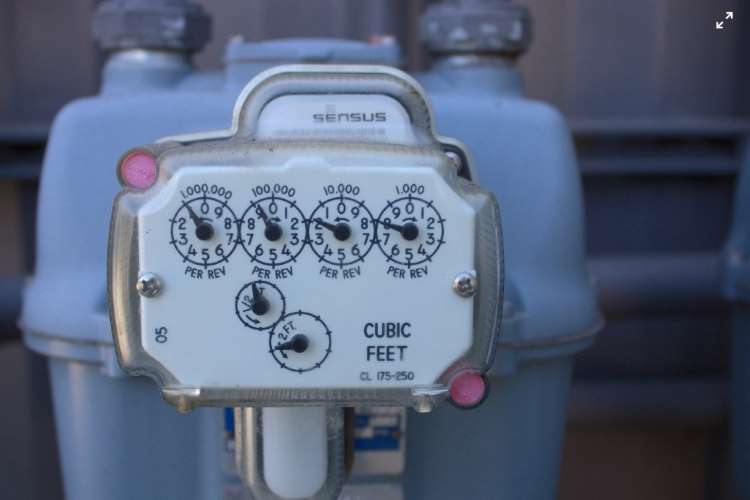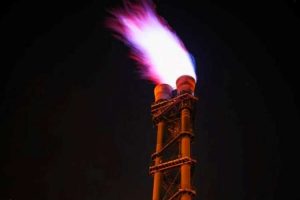
The 192 signatories to the 2015 Paris climate agreement must regularly report a national inventory of greenhouse gas (GHG) emissions, including methane, to the United Nations Framework Convention on Climate Change (UNFCCC). These inventories, however, may be significantly underestimating a country’s actual GHG emissions because of varied measurement techniques, use of different sources of data, and outdated and/or opaque country reports, several studies and investigations have shown.
These data gaps are particularly significant when it comes to emissions of methane, a GHG responsible for almost a quarter of global warming. This is because methane emissions are challenging to quantify, since they often result from unplanned occurrences, as the gas leaks during fossil fuel (gas, oil and coal) production and transport, escapes unnoticed from oil and gas equipment and seeps from long abandoned old wells, a November 2019 study by researchers from Brown University in the US noted. Unreliable methane emissions inventories were complicating climate change mitigation efforts, their study showed.
Over 100 countries pledged to reduce global methane emissions by at least 30% by 2030, at the 26th Conference of Parties (COP26) to the UNFCCC in Glasgow in November 2021. A Washington Post investigation published while COP26 was under way calculated gaps of 16-23% between what many countries had reported on their GHG emissions and the actual emissions being released into the atmosphere using independent estimates, and was the latest to note systemic underreporting of methane emissions.
Methane emissions are both biogenic (natural) and anthropogenic (human-caused), but global estimates of methane emissions from natural sources have been overestimated, a multinational study led by the University of Rochester, USA had found in 2019. The study suggested that the oil and gas (O&G) industry may be responsible for 25-40% more methane in the atmosphere than previous estimates.
An earlier 2018 study by the US-based non-profit Environmental Defense Fund (EDF), which found that methane leaks by the US O&G industry were 60% higher than official estimates, said even small amounts of undetected methane emissions could undo some or all of the environmental benefits of substituting coal or oil with natural gas. In the absence of better data, the story is using the emissions share of sectors from the International organisations such as UNEP, International Energy Agency and privately collected sources like Mckinsey, but we are not able to verify the accuracy of the data.
READ I Vicious circle: Global warming increases methane emissions, says study
Gauging industrial methane leakages
Reducing methane emissions in the O&G sector, which accounts for 35% of human-caused methane emissions, is considered to be low-hanging fruit in the efforts to mitigate the impacts of climate change, as this sector has the lowest-cost abatement potential, and abatement technology is more developed and thus less expensive than for other sectors.
While the agriculture sector proportionally accounts for more (40% of) human-caused methane emissions, abatement measures in this sector will entail a significant change in farming methods. In India, where agriculture accounts for 61% of total methane emissions, this is a cost burden that the government says cannot be placed on India’s largely small and marginal farmers. The threat to farmer’s livelihoods were among the reasons cited by India, the fourth-largest methane emitter, for not signing up to the global methane emissions reduction pledge in Glasgow.

In 2021 alone, the global oil and gas industry wasted $19 billion (nearly Rs 1.5 lakh crore) of natural gas due to methane emissions. The sector has the greatest potential for methane emissions reduction, according to the Oil and Gas Methane Partnership (OGMP), a multi-stakeholder partnership launched by the United Nations Environment Programme (UNEP) and the Climate and Clean Air Coalition (CCAC) in 2014. As we reported earlier, methane emissions from fossil fuel operations would need to fall by around 75% through rapid deployment of measures and technologies between 2020 and 2030, under the International Energy Agency’s (IEA) Net Zero Emissions by 2050 scenario.
Gathering data was the first step toward accurately determining the scope of methane leakage, the EDF 2018 study had said. Through Chasing Methane–IndiaSpend’s industrial methane emissions tracking project–IndiaSpend aims to build an independent system that can track and share Indian methane emissions data in an open, transparent way, for the benefit of all. The Chasing Methane project involves the deployment of sensors that can track methane emissions from the energy, O&G, coal, transportation and industries sectors, among other sources, across different cities of India. The project does not aim to disprove or counter the data being collated by other networks.
Accurate measurement of methane emissions
Both international policy negotiations and domestic policy intervention to curb emissions of GHGs like methane, depend on accurate monitoring and reporting of emissions. A major factor behind significant differences in GHG emissions estimates is the absence of a consolidated framework for emissions reporting for all countries, a study by the US-based Coalition on Materials Emissions Transparency (Comet) said in July 2021.
The Intergovernmental Panel on Climate Change (IPCC) issues internationally agreed upon guidelines for calculating GHG emissions. The current IPCC guidelines include three different levels of reporting of a country’s GHG inventories. The Tier 1, or most basic method, reports very generic emission factors and is considered to provide the least accurate data. The Tier 2 (intermediate) and Tier 3 methodologies are more complex and considered to be more accurate in their emissions calculations. Tier 3, representing the most stringent protocols, has more detailed estimates that are substantiated by source-level monitoring of emissions.
Countries apply different tiers for measuring different greenhouse gas emissions, the Comet study said. Thus, even when countries were applying the IPCC guidelines in good faith, different choices of GHG accounting methodologies and approaches led to significant differences in the emissions reported, the study found. Comet called on the IPCC to adopt a consolidated framework for emissions reporting to improve the consistency and comparability of emissions inventories by countries.
While countries are encouraged to use the more stringent Tier 2 and Tier 3 IPCC methods to calculate GHG emissions under Article 13 of the Paris Agreement, many do not have the scientific resources and capacities to do so, a Stanford University-led study noted in January 2020. Conflict, political tensions and other reasons may also prevent these methods from being deployed in some regions that contribute most heavily to emissions, the Brown University study had noted.
For methane emissions reporting by the O&G industry, the OGMP’s Reporting Framework 2.0, released in November 2020, has five levels, with level five the most stringent. It requires its 80 participating O&G companies to report methane emissions from each of their operations at one of five levels, and to bring the reporting to level five within three years. OGMP aims to make its framework the gold standard for methane emissions reporting by companies.
(Published in an arrangement with IndiaSpend.)
